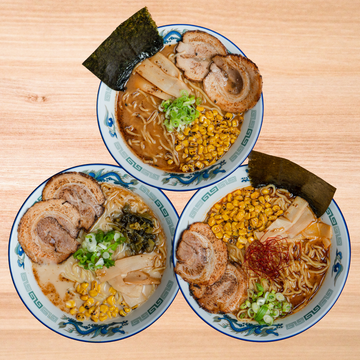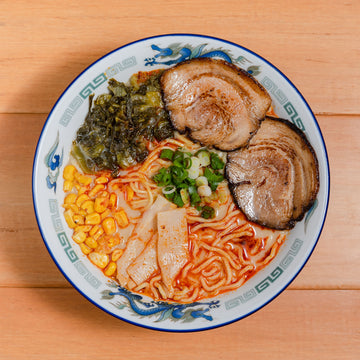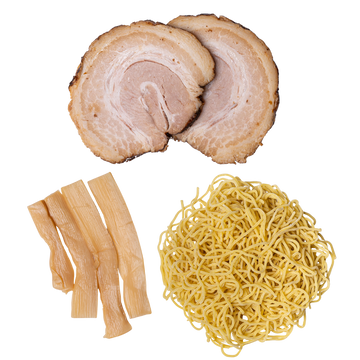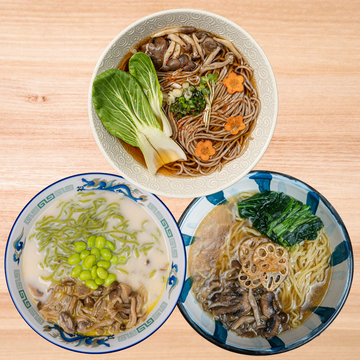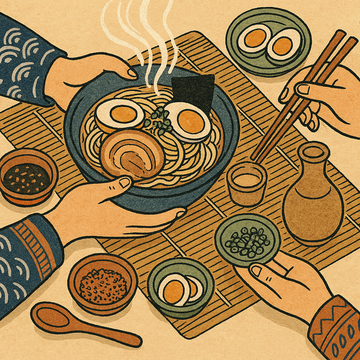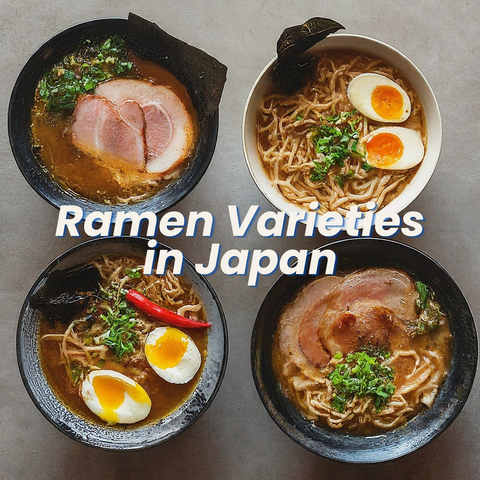
Ramen has become synonymous with Japanese cuisine, adored across the globe for its delightful mix of flavors, textures, and aromas. Within Japan itself, countless variations of this beloved dish exist, each with its unique character and history. In this blog post, we explore the origins and distinctive qualities of four popular ramen varieties: shio, shoyu, miso, and tonkotsu ramen.
1. Shio Ramen - The Delicious Simplicity:
Shio, meaning salt in Japanese, refers to the delicate and lightly salted broth that characterizes this ramen variety. Shio ramen traces its origins back to the late 19th century in Kitakata, a city in northern Japan's Fukushima prefecture. Its light broth is typically made by combining clear chicken or seafood stock with salt and a hint of other seasonings like seaweed or dried shrimp powder.
Shio ramen offers a clean and refreshing flavor profile, allowing the natural taste of the ingredients to shine through. Kenchan's DIY Roasted Garlic Shio ramen kit exemplifies this light and delicate variety especially well thanks to the spinach and lotus root toppings included!
2. Shoyu Ramen - The Timeless Classic:
Shoyu ramen, perhaps the most well-known ramen variety worldwide, hails from Tokyo and Yokohama. The broth, infused with soy sauce (shoyu), is brewed using a combination of animal or vegetable stock, soy sauce, and various aromatics like ginger, garlic, and onions. This results in a flavorful, savory broth that is both comforting and rich.
Introduced in the early 20th century, shoyu ramen initially drew inspiration from Chinese-style wheat noodles, but it quickly evolved to incorporate local ingredients and styles. Kenchan's DIY Classic Shoyu ramen kit is faithful to the word "classic". Smoky, yet balanced and so satisfyingly savory!
3. Miso Ramen - The Umami-Infused Delight:
Originating in Sapporo, the capital of Hokkaido, miso ramen stands out due to its distinct umami flavor. The city's harsh winters inspired the creation of a heartier ramen variation, blending fermented soybean paste (miso) into the base. The resulting broth is thick, satisfying, and bursting with umami goodness.
Miso ramen typically features a mix of chicken or pork broth combined with miso paste, creating a harmonious combination of flavors. This variety often incorporates a plethora of additional toppings such as corn and marinated bamboo shoots. Kenchan's DIY Original Miso and Spicy Miso ramen kits are two different kits focusing on what a proper "umami-bomb" bowl of miso
ramen should be, hot or not!
4. Tonkotsu Ramen - The Creamy Indulgence:
Hailing from Fukuoka, in southern Japan, tonkotsu ramen is renowned for its rich and creamy pork broth. This style of ramen emerged in the mid-20th century and has since gained widespread popularity. The broth is made by boiling pork bones for an extended period, extracting collagen and marrow, resulting in a thick, opaque, and deeply savory broth with a melt-in-your-mouth texture.
This variety is commonly garnished with toppings such as sliced braised pork, green onions, and pickled greens/ takana, providing additional layers of taste and depth of flavor. Kenchan's DIY Premium Tonkotsu and Spicy Tonkotsu ramen kits are truly authentic, featuring a velvet-creamy pork broth along with perfectly paired toppings that's sure to satisfy even the
most discerning ramen purist!
From the simplicity of shio and the classic nature of shoyu to the umami-rich miso and the indulgent tonkotsu, each variety of ramen in Japan holds a unique story and flavor profile/character. Whether you are a ramen connoisseur or just discovering all these varieties exist, exploring the origins and characteristics of these four popular varieties will enhance your appreciation of the artistry and diversity that ramen embodies. Kenchan Ramen exists to bring these varieties and more home to you; to have you easily create a restaurant quality bowl of gourmet ramen in minutes!
